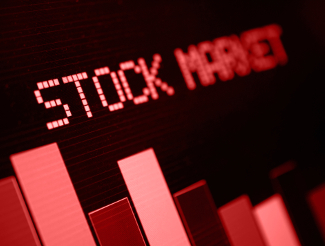Stocks have been on a roller coaster ride for the past year and a half, nearing but never quite pushing through key barriers. While the S&P 500 finally broke the 3,000-point mark, the Dow Jones hasn’t managed to break through the 27,000-point mark, falling short every time.
For professional investors on Wall Street, the fact that the Dow was near 27,000 points last February and is still there today hasn’t been worrying. The massive drops last spring and in the fourth quarter of 2018 came ahead of similarly massive rebounds. Even though stock markets ended 2018 down significantly, traders who had the ability to time the markets could have made returns of 35% or more last year, at least in theory.
For the average investor, however, who sticks to a buy and hold strategy and who doesn’t have the ability to engage in massive amounts of low-cost or no-cost transactions, those types of returns are impossible to achieve. These investors may have bought into markets last year at 26,700 points, and they’re still buying in at the same level this year. Their returns over the past 18 months have been minimal at best, if not outright negative.
Given the number of public companies that are currently unprofitable, an astoundingly high 37%, and the number of recent IPOs from companies that are still unprofitable, it is clear that stock valuations are extraordinarily high, and for no good reason. We’re seeing a level of valuations that hearkens back to the days of the dotcom bubble, and that’s not a good sign for investors.
Investing in stocks today is nothing more than a gamble. Those who buy in today are getting in late to the game, and they’ll be the ones left holding the bag when stock markets ultimately crash. Just remember that stock markets lost over 50% of their value in the last financial crisis, and many investors were wiped out in the post-2000 dotcom bubble crash. Given that the most popular stocks today are major tech firms such as Amazon, Apple, and Facebook, or unicorns such as Uber, many investors who invested too heavily in these firms could see losses approaching 70-80% or more in the event of another financial crisis.
That’s why, along with stocks pushing near all-time highs, we’re also seeing gold making major gains, up over $100 already this year and with plenty of room to run. The smart money has already started making the move to gold, since gold is a hedge against the risk of the coming stock market crash. The more latecomers pile into the stock market, the more savvy investors will continue moving to gold, continuing to drive its price up. And once markets finally make their move downward, gold will take off like never before.
If you’re holding investments in stocks, through a 401(k) or other retirement account, do you really want to keep holding those overvalued assets and subject yourself to the risk of a crash that could cost you everything? Or do you want to roll over those assets tax-free into a gold IRA and protect your hard-earned investments from certain decline? Your ability to retire in comfort and safety will depend on the choice you make today.
This article was originally posted on Goldco.



